Buddhism
Symbolism In Buddhism
Mudras :
Images of the Buddha were produced from the fifth century onwards. The sacred nature of the representation is reflected in the artistic goal of creating an aura of equanimity, perfection, and holiness. The large number of rules governing the execution of a portrayal or a statue require an erudite understanding of Buddhist symbolism. Any Buddha figure made by a skilled artist exhibits a multitude of characteristics that communicate subtle meanings and intentions to the viewer. The most important of these characteristics are perhaps the mudras, or hand gestures, of the Buddha. These well-defined gestures have a fixed meaning throughout all styles and periods of Buddha images.
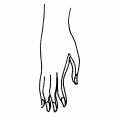 Bhumisparsa
Mudra Bhumisparsa
MudraTouching the earth as Gautama did, to invoke the earth as witness to the truth of his words. |
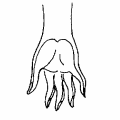 Varada Mudra Varada MudraFulfilment of all wishes; the gesture of charity. |
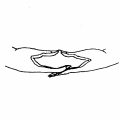 Dhyana Mudra Dhyana MudraThe gesture of absolute balance, of meditation. The hands are relaxed in the lap, and the tips of the thumbs and fingers touch each other. When depicted with a begging bowl this is a sign of the head of an order. |
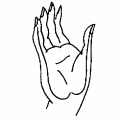 Abhaya Mudra Abhaya MudraGesture of reassurance, blessing, and protection. "Do not fear." |
|||
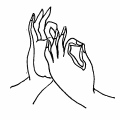 Dharmachakra
Mudra Dharmachakra
MudraThe gesture of teaching usually interpreted as turning the Wheel of Law. The hands are held level with the heart, the thumbs and index fingers form circles. |
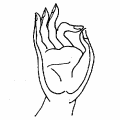 Vitarka Mudra Vitarka MudraIntellectual argument, discussion. The circle formed by the thumb and index finger is the sign of the Wheel of Law. |
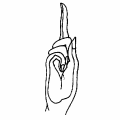 Tarjani Mudra Tarjani MudraThreat, warning. The extended index finger is pointed at the opponent. |
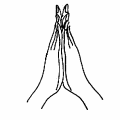 Namaskara Mudra Namaskara MudraGesture of greeting, prayer, and adoration. Buddhas no longer make this gesture because they do not have to show devotion to anything. |
|||
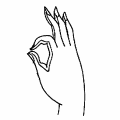 Jnana Mudra Jnana MudraTeaching. The hand is held at chest level and the thumb and index finger again form the Wheel of Law. |
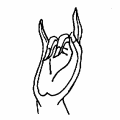 Karana Mudra Karana MudraGesture with which demons are expelled. |
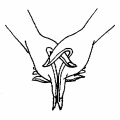 Ksepana Mudra Ksepana MudraTwo hands together in the gesture of 'sprinkling' the nectar of immortality. |
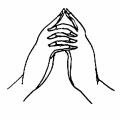 Uttarabodhi
Mudra Uttarabodhi
MudraTwo hands placed together above the head with the index fingers together and the other fingers intertwined. The gesture of supreme enlightenment. |
|||